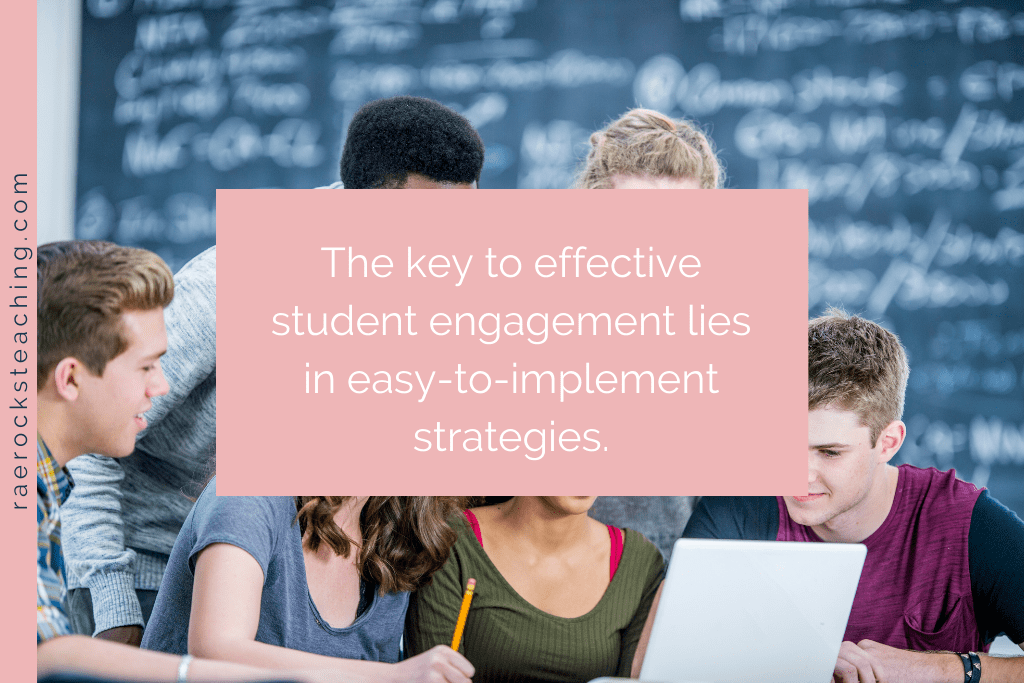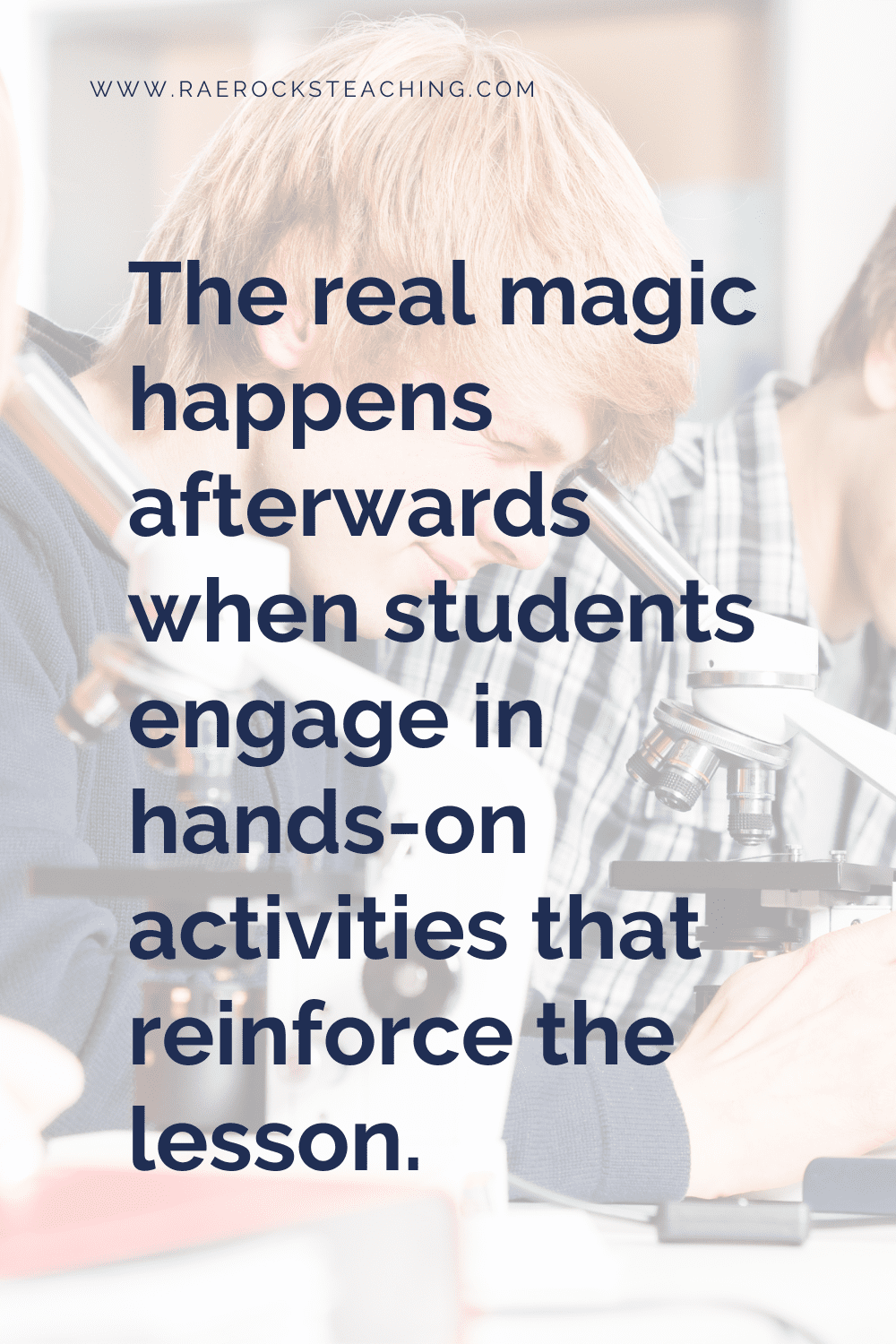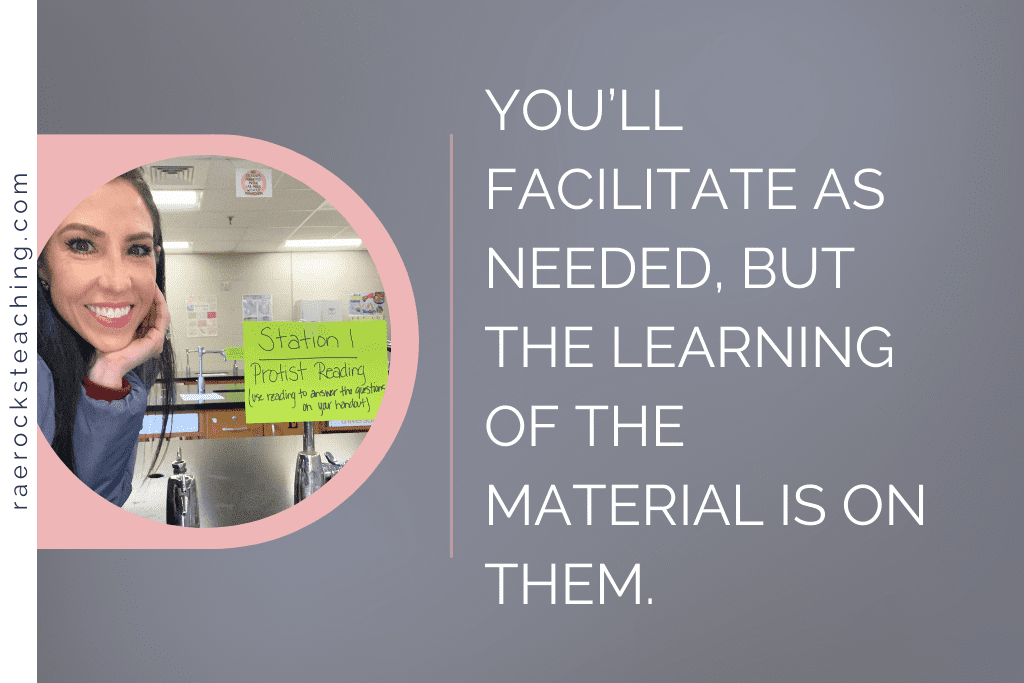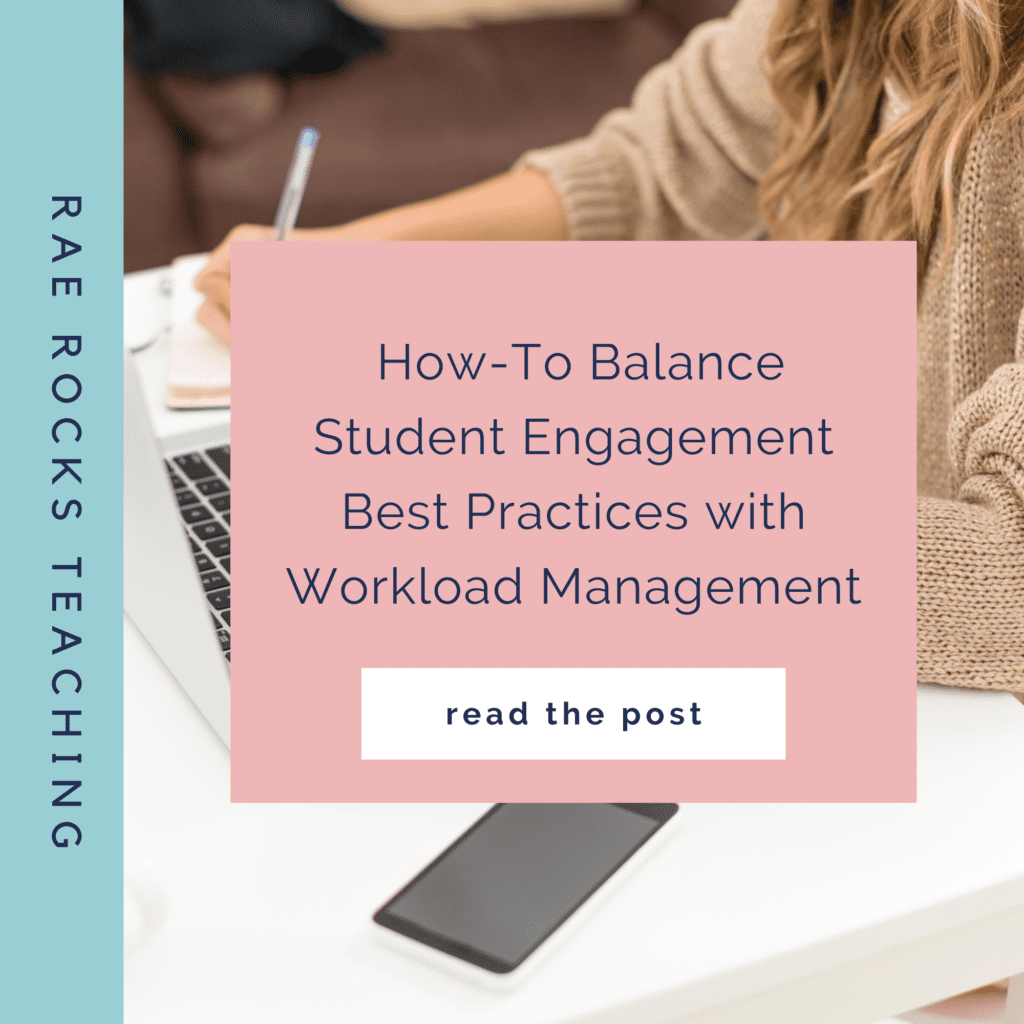Are you looking for student engagement best practices without increasing your workload? In the world of high school science education, the formula for this isn’t found in a textbook. It’s in the delicate balance between igniting student interest and managing the ever-growing workload. Here’s how you can master this without adding to your to-do list.
But first, are you looking for more ways to engage your lessons in class without the extra workload?
Student Engagement Best Practices
Easy Implementation
The key to effective student engagement lies in easy-to-implement strategies. Us teachers need tools that not only resonate with our students but also seamlessly fit into existing lesson plans and curriculum. We do not need any additional word piled on top of us and most of us I would dare to say is looking desperately for ways to decrease our workload! This is why I have included some easy implementation strategies to help increase your students engagement without an additional urden on you!

-
Save
The In-Class Flipped Classroom Model
The in-class flipped classroom is an innovative twist on a popular educational model. Instead of students digesting new information at home, they do it in class, through interactive, teacher-created videos that can be paused, discussed, and replayed. The real magic happens afterwards when students engage in hands-on activities that reinforce the lesson. This model promotes active learning and critical thinking while giving you, the teacher, the chance to facilitate rather than lecture. This has been absolute game-changer for me in so many ways. I have heard time after time that “my students won’t do the homework” and “students will not watch the videos away from school”. This is becoming more of a concern and I can totally understand. Students are involved in sports, extracurriculars, have jobs outside of class time. Some students also do not have access to the technology or internet which poses a problem. This is where the absolute magic of the in-class flip stems from. We have students for the majority of their waking hours and we have got to find a way to reach them while they are with us. We can have the best of both worlds by flipping and doing so in-class.

-
Save
Peer Teaching: Learning by Teaching
Another low-lift, high-impact strategy is peer teaching. Students are grouped and each assigned different topics to become “experts” on. They are given time and parameters to research and write down their finding. They then teach their peers, which not only reduces your direct instruction time but also increases retention and understanding for both teacher and learner. You could even have the students create their own quizzes to give to the students to measure their understanding of the content they taught. It’s a win-win: students engage deeply with the material, and you get to guide from the sidelines.
Gamification: Play to Learn
Games aren’t just for recess anymore. Integrating elements of game playing, like point scoring and competition, can spur interest and motivation. These are super awesome when they have skin in the game. If you provide bonus pints for those who play or the winners, or even give out candy to the top 3, they will be so competitive it will make your head spin. Try using platforms like Quizizz, Blooket, Quizlet Live, Kahoot, or Gimkit or create a simple classroom leaderboard for various tasks. Gamification taps into the joy of learning without the need for extensive preparation on your part. You can also search these platforms for pre-made games as well!
Tech Tools: Harnessing the Digital Advantage
Digital tools can be a godsend for busy teachers. Apps like Edpuzzle (my personal favorite) allow you to insert questions into videos, ensuring students are following along. Google Forms can be used for quick check-ins or exit tickets, giving you instant feedback on student understanding with minimal grading required. You can easily put these together with minimal effort and truly gauge your students learning.
Project-Based Learning: Inquiry in Action
Project-based learning is another pillar of student engagement best practices. By challenging students to solve real-world problems or conduct experiments, they learn to apply scientific concepts in meaningful ways. As a bonus, these projects often require little to no daily prep after the initial setup. This is a great way to get your student invested in a topic and really dive deeper. They can be tedious to create, so finding one already made is definitely key.
Science Stations: Circuits of Knowledge
If you follow me on social media, you know I LOVE STATIONS! I create and use stations for every unit and try to do them at least once a week. They allow students to move and learn at the same time It breaks up the monotony of sitting and getting and really immerses students into the content. Set up stations around the classroom, each with a different activity or experiment related to the day’s lesson. Students rotate through, allowing them to engage with the material in diverse ways. You’ll facilitate as needed, but the learning of the material is on them, making your job easier while deepening their understanding.

-
Save
Self-Directed Learning: The Power of Choice
When students have a say in their learning, engagement skyrockets. Offer a menu of activities or projects and let them choose their path. This autonomy empowers students and takes some pressure off you to entertain since they’re following their interests.This could also require some upfront work, but again, beg, borrow, steal (with permission) to cut way down on the setup.
Student Engagement Best Practices Wrap-up
Implementing these student engagement best practices doesn’t require overhauling your entire curriculum or adding hours to your planning time. It’s about making strategic choices that maximize impact without increasing your workload. Whether through the in-class flipped classroom, peer teaching, or project-based learning, the goal is the same: to create a dynamic learning environment where students are genuinely excited about science and you can thrive as an teacher.
Don’t forget to Sign up for the FREE GUIDE | Flip & Thrive: Your 5-Step Quickstart Guide to a More Engaging Classroom

-
Save
I love sharing helpful content with y’all and would love to connect on IG or Facebook. I’m on TikTok too! Follow me and send me a DM with what you need more of because I’m here to help! If you are looking for even more inspiration, find me on Pinterest!
Wanna read more?
3 Easy Alternatives to Video in the Flipped Classroom Teaching Method
Share via:








